First-party collections call centers are becoming a cornerstone of modern revenue recovery strategies. These centers act as an extension of your brand, reaching out to customers early in the delinquency cycle with empathy, accuracy, and a solutions-first mindset. But how do you know your first-party collections team is performing? What metrics matter? And how can you improve outcomes without damaging customer trust?
In this blog, we’ll walk through the key performance indicators (KPIs) and qualitative factors that define the effectiveness of a first-party collections call center—and how to use them to drive performance and loyalty.
How to Evaluate the Success of Your Brand-Driven Recovery Operation
What Is First-Party Collections?
First-party collections involve agents—either internal or outsourced—contacting customers on behalf of your company using your brand name and voice. These agents operate within your guidelines, maintain your reputation, and often reach out within the first 30–90 days of missed payments.
Outsourcing this function to a partner like Fusion CX lets businesses scale collections without sacrificing quality, compliance, or customer satisfaction.
Why Measurement Matters in First-Party Collections
Unlike third-party agencies, first-party collections carry more responsibility. Every call is a brand touchpoint. Every payment attempt is also a relationship moment. Measuring the effectiveness of your call center ensures you:
- Recover the highest possible percentage of overdue revenue
- Preserve and even improve customer loyalty
- Stay compliant with legal and ethical standards
- Optimize resources (human and technological)
- Identify and address underperformance proactively
Core KPIs to Measure First-Party Collections Call Center Effectiveness
1. Right Party Contact Rate (RPC)
This metric shows how often agents are successfully reaching the correct individual responsible for the payment. A low RPC may indicate poor data hygiene or ineffective contact strategies.
Formula:
RPC = (Number of Right Party Contacts ÷ Total Call Attempts) × 100
2. Promise to Pay Rate (PTP)
Tracks how many contacts result in a customer promising to pay, whether in full or partial.
Formula:
PTP = (Number of Promises to Pay ÷ Total Right Party Contacts) × 100
3. Kept PTP Rate (Fulfillment Rate)
Not every promise leads to a payment. This KPI measures follow-through and reflects on both agent effectiveness and customer quality.
Formula:
Kept PTP = (Number of Fulfilled Promises ÷ Total PTPs) × 100
4. Recovery Rate
This shows what portion of the total outstanding amount has been recovered within a certain timeframe.
Formula:
Recovery Rate = (Amount Collected ÷ Total Debt Assigned) × 100
5. Average Days to Collect
The average number of days it takes to recover payment after delinquency begins. Lower is better.
6. First Call Resolution (FCR)
The percentage of customers who resolve or commit to resolve their dues in the first interaction.
Formula:
FCR = (Resolved on First Contact ÷ Total Right Party Contacts) × 100
7. Compliance Score
Based on call audits, this score reflects how well agents adhere to regulatory and internal compliance standards.
Fusion CX uses AI-driven QA tools that evaluate 100% of calls in real time.
8. Call Quality Score
A blend of soft skills, script adherence, professionalism, and problem-solving capability. Usually assessed through random or automated call sampling.
9. Agent Utilization and Efficiency
Tracks call handling times, idle time, wrap-up time, and occupancy rates. The goal is to ensure agents are productive without being overworked.
10. Digital Engagement Rate
If you’re using omnichannel outreach (SMS, WhatsApp, email), how often do customers respond or click on links?
11. Dispute Resolution Rate
How quickly and effectively does your team handle account disputes? High rates with low resolution times indicate trust-building capabilities.
12. Customer Satisfaction Score (CSAT)
Though rare in collections, measuring post-call satisfaction can offer insights—especially for customers put on payment plans or those who’ve just resolved issues.
Qualitative Indicators of a High-Performing First-Party Collections Team
- Empathy in Conversations. Customers don’t remember what you said—they remember how you made them feel. Fusion CX uses tools like MindSpeech to ensure tone and cadence are warm, neutral, and clear.
- Adaptability to Objections. Top agents aren’t script-readers—they’re solution providers. Measure objection handling through QA audits and coaching tools like Arya.
- Consistency in Reporting and Documentation. Effective teams have detailed notes, documented arrangements, and a clear escalation trail. This helps in repeat contacts and dispute resolution.
- Low Complaint Volumes. Fewer complaints to your internal team or external regulators (like CFPB or BBB) is a direct indicator of good agent behavior and customer care.
How Fusion CX Measures and Optimizes First-Party Collections
At Fusion CX, we use a blend of technology, analytics, and coaching to elevate every agent interaction. Our approach includes:
- Real-time coaching via Arya
- 100% call QA auditing with AI oversight
- Omnichannel tracking dashboards
- Smart segment targeting (based on account age, balance, risk profile)
- Regular calibration with clients to ensure message alignment and performance transparency
Final Thoughts
First-party collections are more than just early-stage payment reminders—they’re an extension of your customer experience strategy. Measuring effectiveness ensures you’re not just recovering revenue, but also reinforcing trust and building long-term loyalty. With Fusion CX, you get the tools, talent, and transparency needed to maximize both outcomes and relationships.
Ready to improve your first-party collections performance? Let’s talk about how Fusion CX can help.


